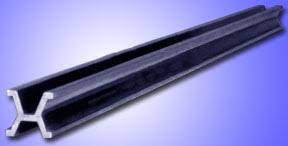For a short introduction to the International System of units (SI) see the previous lecture "SI Intro & Time" within this topic.
Length Units
In the past the unit of length meter was defined as 1/10,000,000 of a distance from the north Pole to the equator.
Later on a metal rod made of an alloy of iridium and platinum of an X-shaped section was made as THE standard meter. A few copies were made to serve for all practical means stored in France and other places.

Obviously, as the requirements of different industries dictated more a more precision, this standard could not satisfy these demands.
In 1960 this standard was revised in favor of the one based on some fundamental physical constant.
Recall the main principle of establishing the units of measurement in the International System of units (SI) as being based on some constants that do not depend on our technology or any varying with time process (like rotation of the Earth).
That was the reason to define a time measuring unit second in SI as a period of time during which the number of oscillations of electromagnetic field of excited atom of cesium-133 is EXACTLY equal to 9,192,631,770 (see the previous lecture "Time" within this topic).
So, the definition of a time measuring unit second depends only on properties of an atom of a particular element, cesium-133, - a physical constant under wide range of conditions.
In the same spirit the unit of length meter (m) is defined in SI.
The process chosen for the role of a base for the standard unit of length is light and, in particular, its speed in vacuum, a constant independent of influence of any conditions.
The unit of length meter is defined using the already defined unit of time second as a distance the light in vacuum covers during an interval of 1/299,792,458 of one second.
Therefore, as follows from this definition, the speed of light in vacuum is EXACTLY 299,792,458 meters per second (m/s), and the main principle of defining the units of measurement through physical constants is preserved.
The abbreviation of the meter in SI is m.
Derived from the meter length unit are its fractions
1 decimeter (dm) = 10−1 m
1 centimeter (cm) = 10−2 m
1 millimeter (mm) = 10−3 m
1 micrometer (μm) = 10−6 m
1 nanometer (nm) = 10−9 m
1 picometer (pm) = 10−12 m
as well as multiple unit
1 decameter (dam) = 10 m
1 hectometer (hm) = 100 m
1 kilometer (km) = 1000 m


No comments:
Post a Comment